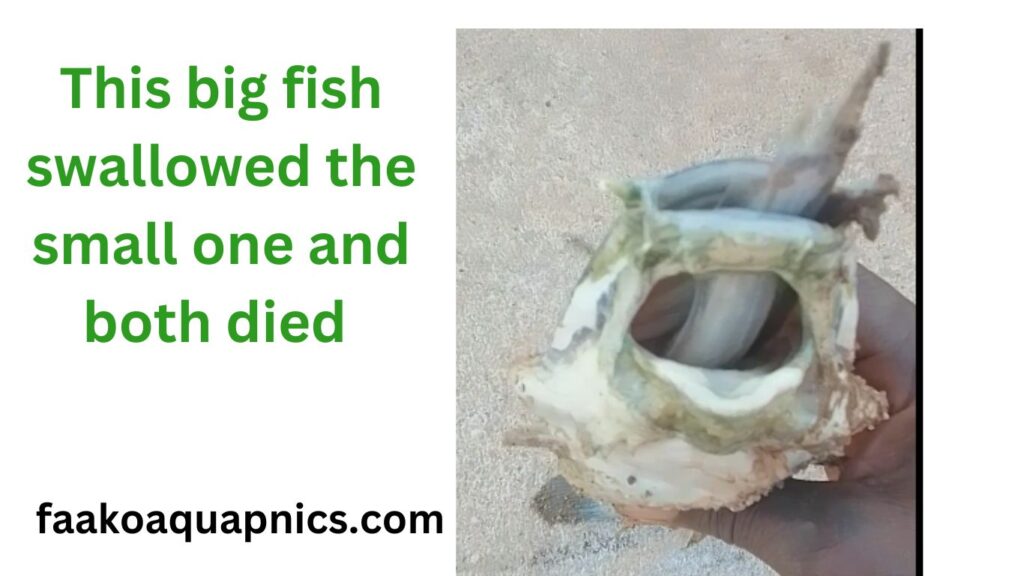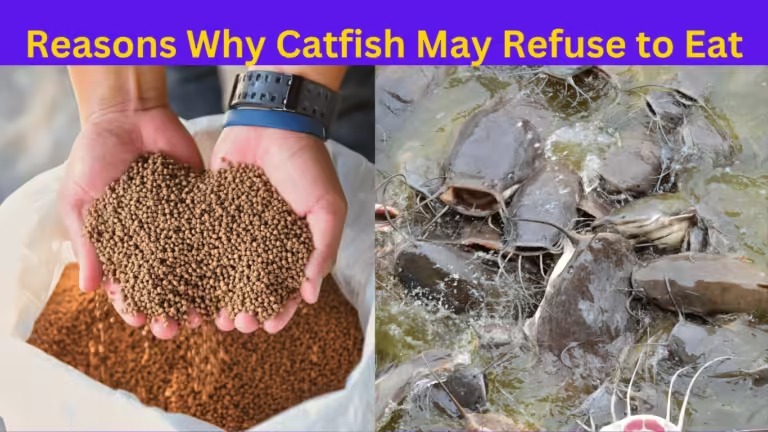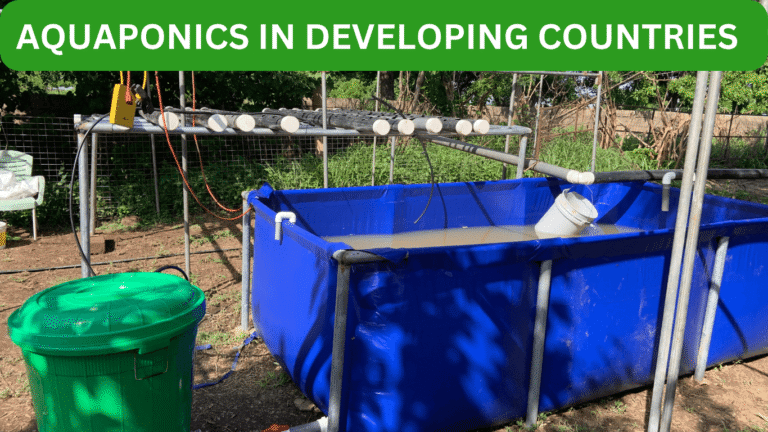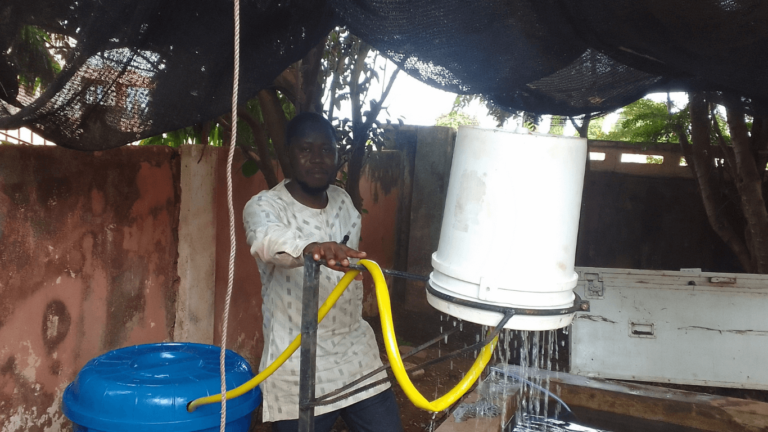10 reasons why catfish won’t eat and how to fix them is a very critical issue every fish farmer must know. Catfish farming can be rewarding, but it comes with its own set of challenges, one of which is when your fish refuses to eat. This behavior can lead to poor growth, wasted feed, and overall farm inefficiencies.
In this blog post, we will explore the 10 reasons why catfish won’t eat, offering insights and solutions to help you optimize your farming process.
1. New Environment Stress
One of the primary reasons your catfish may refuse to eat is a sudden change in their environment. When you purchase fingerlings or juvenile fish and transport them from one location to another, they experience stress and disorientation. Upon arriving at your farm, it is not advisable to feed them immediately. The new environment overwhelms them, and they need time to acclimate before they can comfortably resume eating.
Solution
Allow the fish to settle into their new surroundings for a few hours or even a day before attempting to feed them. This adjustment period helps them get familiar with their new habitat, which will make them more receptive to eating.
2. Stress Due to Handling or Water Change
Stress is a significant factor affecting a catfish’s appetite. When fish undergo sorting—being transferred and categorized by size—or experience sudden changes in water conditions, their stress levels rise. This is especially true if you’ve just performed routine maintenance, like changing the water in the pond. The fish are naturally disturbed by these actions and will need time to recover before they are willing to eat again.
Solution
Give the fish time to recover after sorting or a water change. Feeding immediately will not only waste feed but also pollute the water. Waiting until the fish are calm will lead to better feeding responses.
3. Cold Water Temperatures
Water temperature plays a crucial role in a catfish’s feeding habits. During colder periods, such as the Harmattan season, fish metabolism slows down, and their appetite diminishes. Cold water temperatures reduce their feeding activity, so even if food is available, they may not be as responsive.
Solution
During colder months, adjust your feeding schedule. It’s advisable to wait until the temperature rises slightly later in the day before offering food. Avoid feeding early in the morning when water temperatures are at their lowest.
4. Poor Feed Quality
The quality and palatability of the feed can influence whether your catfish will eat. If the feed is not appealing to them, they may simply refuse it. This is particularly noticeable when you switch feed brands or formulations. Catfish are sensitive to the ingredients in their feed, and if they do not find it palatable, they will reject it.
Solution
Always opt for high-quality fish feed that contains the right balance of nutrients and ingredients. Test new feed by introducing it gradually and observing how the fish respond. Making your own fish feed will not only give you quality feed but also reduce the feed cost, maximizing your profit. Remember, if your fish are not eating well, they won’t grow well either.
5. Health Issues and Disease
Sick fish are unlikely to eat. Diseases, parasites, and fungal infections can all affect a catfish’s willingness to consume food. When fish are unwell, their immune systems focus on fighting off the illness, which suppresses their appetite.
Solution
If you notice your fish are not eating and suspect illness, treat them promptly. After treatment, allow them time to recover before reintroducing feed. Healthy fish will naturally resume their eating habits once they are on the mend.
6. Dirty Water
Dirty water is one of the 10 reasons why catfish won’t eat. When the water becomes polluted with waste or uneaten feed, it not only affects the oxygen levels but also leads to poor feeding responses. Catfish are sensitive to water quality, and if the water is too dirty, they won’t eat.
Solution
Maintain clean water by regularly changing it and monitoring its quality. Clear, well-oxygenated water encourages better feeding and overall fish health. Farmers often notice a marked improvement in feeding behavior right after a water change.
7. Swallowing Smaller Fish
In ponds where larger fish are present with smaller ones, the bigger fish may sometimes swallow the smaller fish. When this happens, the larger fish may refuse to eat more feed as they are still digesting the smaller fish.
This may sound weird but it happened on my farm several times. Check the image below for confirmation.

Solution
To prevent this issue, ensure that your ponds are well-sorted, grouping fish of similar sizes together. This minimizes the chances of predation and ensures that all fish, regardless of size, can feed without competition.
8. Undigested Feed
Feeding your fish too frequently can lead to undigested food remaining in their system, which in turn reduces their appetite. Smaller fish require more frequent feeding, while larger fish can go longer between meals as they take more time to digest.
Solution
Tailor your feeding frequency based on the size of the fish. Smaller fish can be fed up to three times a day, while larger ones should be fed only twice. Always allow adequate time for digestion before the next feeding to prevent wastage and water pollution.
For example, when I first stocked fingerlings, I was feeding my fish 3 times a day. I noticed the fish would only eat well in the morning but not as much in the afternoon and evening. Then I started feeding them twice, thus morning nd evening. But when they grow up to 4 months, I then feed once a day. That is only evening.
9. Incorrect Feed Sizes
The size of the feed should match the size of your fish. Offering pellets that are too large for smaller fish will discourage them from eating. Similarly, if the feed is too small for larger fish, they may not get the nutrition they need.
Solution
Use appropriately sized feed for each growth stage of your catfish. As they grow, gradual increase the pellet size to match their increasing mouth size and nutritional needs. Refer to feeding guidelines for your fish’s size and weight to ensure you’re providing the right feed size.
10. Lack of Sorting
When fish of different sizes are kept together, feeding competition arises. Larger fish will dominate the feeding space, while smaller ones shy away out of fear, which leaves them malnourished.
Solution
Sort your fish regularly by size and keep them in separate ponds. This way, each group gets an equal chance to feed without competition from larger fish. Proper sorting also reduces the likelihood of smaller fish being preyed upon.
Conclusion: How to Encourage Better Feeding
Understanding these 10 reasons why catfish won’t eat is critical for effective fish farming. Here are a few takeaways:
- Always acclimate new fish to their environment before feeding.
- Monitor water quality and temperature to maintain optimal feeding conditions.
- Use high-quality, palatable feed to encourage consistent growth.
- Sort your fish regularly to prevent competition and cannibalism.
- Feed according to their size and monitor digestion to avoid overfeeding.
By addressing these common feeding problems, you’ll ensure that your catfish grows healthier, faster, and stronger. Managing their environment, feed quality, and health are all key factors in a successful fish farming operation. Make sure to subscribe to our YouTube channel, “Faako Aquaponics” for more tips on catfish farming, and check out our other blog posts for additional resources




